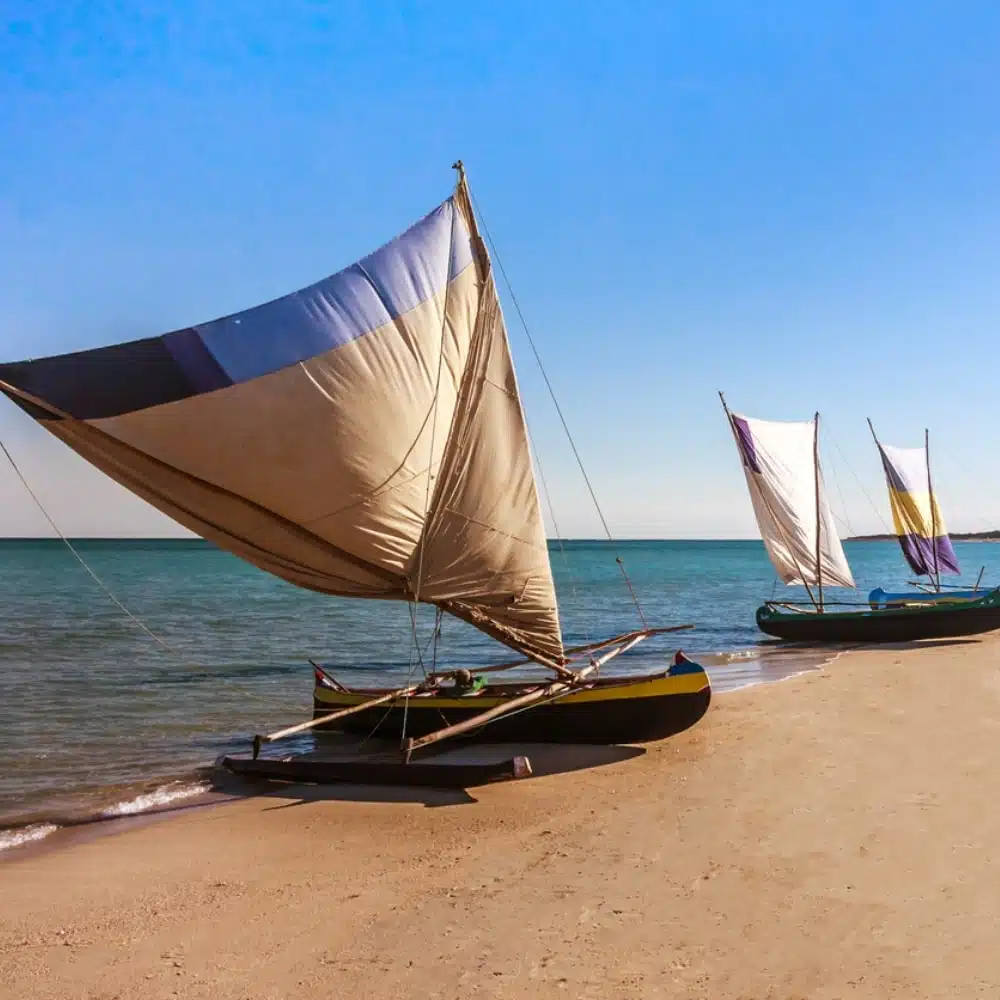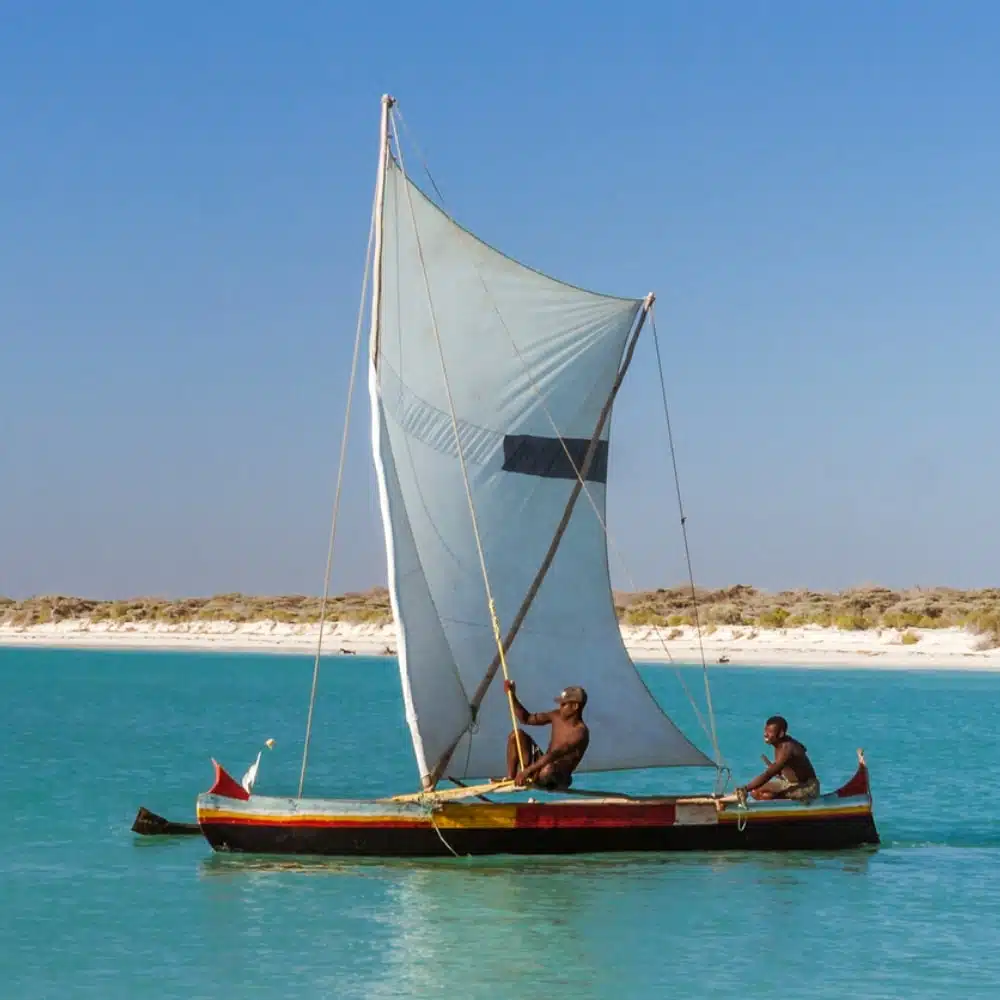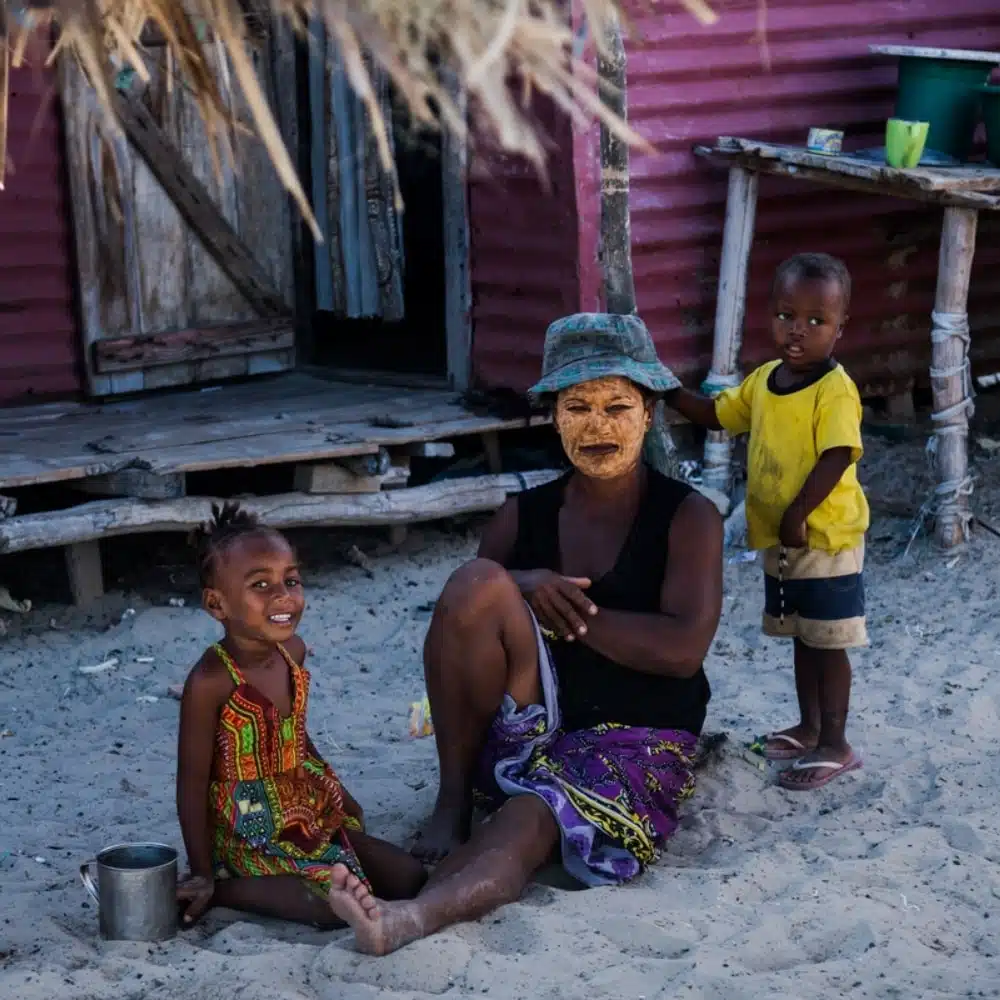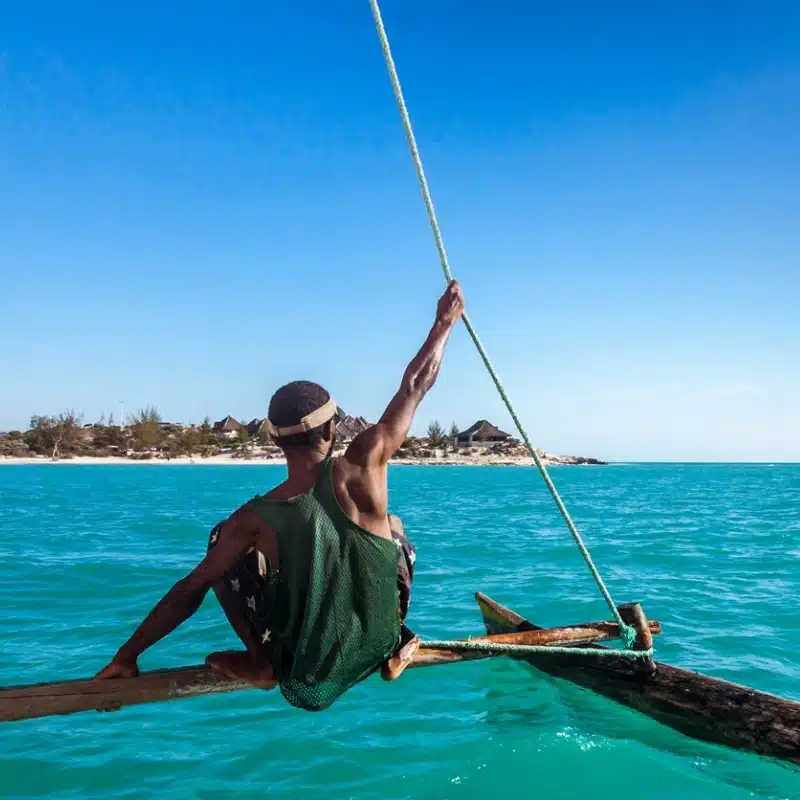Meet the Vezo People of Madagascar
Facing Mozambique, along the emerald waters of the southwest coast of Madagascar, live the Vezo, one of the first ethnic groups of the “island continent”. These people of the sea make up a community of traditional, semi-nomadic fishermen and great connoisseurs of the region’s marine ecosystem. Come meet them during your Madagascan adventure…
From Ntaolo to Vezo
Of the 18 ethnic groups accounted for in Madagascar, the Vezo are among the oldest. At first, they were the Ntaolo (Vahoaka Ntaolo or “the men before”), the first Austronesian people to land from the Indonesian archipelago on the west coast of Madagascar aboard their canoe at the beginning of our era. Then they separated… The Vazimba, “those of the forest”, settled in the hinterland, became hunters, gatherers and farmers, while the Vezo, “those of the coast”, chose to remain close to the shores, valiant fishermen putting their destiny in the hands of the Indian Ocean. Today, a few thousand of them live in villages scattered along the Mozambique Channel, on both sides of the Tropic of Capricorn, particularly between the cities of Morondava and Tuléar.

A People United Around the Hazomanga
Family members and elders hold positions of importance within the traditional Vezo social hierarchy. The eldest of them, the so-called Mpitak’hazomanga, is the village chief and nothing is decided without his consent. He is the guardian of the Hazomanga, a pillar of worship planted next to his house, a kind of sacred altar around which offerings, prayers and ceremonies are organised. For families who gather there, it is a place to pass down knowledge, know-how and rituals. It is also a place of communion between the living and the dead. Ancestors whose kindly spirits must be honoured in order to ensure protection and good fortune. The Vezo therefore rely entirely on the Mpitak’hazomanga, the only one able to establish this sacred link between the families and their forebears. By communicating in this way with their ancestors around the Hazomanga, by bringing together heaven and earth, the human and the beyond, the Vezo give meaning and a right of existence to their family.
Ancestral Maritime Expertise
The Vezo owe their lives to the sea, and a Vezo child will have to learn to swim to become a member of the community. When asked what they will do when they grow up, it is likely that they will answer ‘I will fish’. At least, if they are a boy. For it is the men who are responsible for fishing. Heirs to their distant Indonesian ancestors, the Vezo people have acquired great knowledge of the seabed. Their fishing techniques have changed very little over time: they still use nets, hooks and even harpoons while holding their breath under water. An essential work tool and a real object of pride, the lakana (or laka) is a traditional Vezo outrigger canoe. Its hull, hand-carved out of soft and light Farafatse wood, is narrow and slender to make navigating through the water easier. The boats are painted in bright colours and decorated with traditional patterns.

Being semi-nomadic, the Vezo people can leave for several weeks or even several months aboard their lakana, migrating along the coast according to the seasons, in search of new fishing areas. The youngsters put on flippers, masks and snorkels and dive to spot the fish shoals, while the elders follow them by boat, waiting for their signal to release their nets and surround the fish… In the evening, they set up makeshift encampments along the beach, using the square sails of their canoes as tents. The women, meanwhile, remain “between land and sea”, in charge of both domestic affairs and marine resources near the shore. At low tide, they can be seen roaming the reefs in search of octopuses and sea urchins. When the men return, the women are responsible for preparing the fish caught during the day, drying and salting, as well as selling them on local markets.

In the Name of the Sea
Although the Vezo draw their strength from the sea, which protects and feeds them, it is also their weak spot, sometimes proving hostile and untameable. They worship its riches, indispensable to their livelihood, as much as they fear its wrath. Beware the genies and ancestors that lay beneath the waves! The Vezo are used to laying their dead to rest in a canoe before letting them peacefully find peace in the sea. Offending their souls can bring storms, tempests, strong winds and tides. It is therefore essential to honour them in order to stay in the ocean’s good graces. Respecting the sea for a Vezo fisherman also means respecting its resources. Fishing must never exceed the needs of the community. The smallest fish will be returned to the water. And if there are not enough fish, there is no complaining. It might insult the spirits of the depths…

However, in recent years, the increasing demand for fish has seen some activities intensify. And to face the threat of unbalancing the natural order, the Vezo people have decided to act. For example, the Velondriake association (“to live with the sea” in Vezo dialect), established in the south-west of the island, is the first locally managed marine area (Aire Marine Gérée Localement or AMGL) in Madagascar. Within the association, all kinds of algae farmers, octopus hunters and merchants, sea cucumber farmers, shrimp fishermen, etc., both men and women, work together toward a common goal. They make up an entire community dedicated to managing the maritime area of 32 villages, to preserve and sustainably exploit maritime resources.
Known for its hospitality, the Vezo community will welcome you with open arms, always keen to share their know-how and, above all, their way of life! Their philosophy is based on daring to open up to others so as never to be alone. And when faced with the language barrier, music and dance will lead the way to friendly and unforgettable moments of communion. At their side, let yourself go. Learn this moving lesson of humility they can teach you and appreciate this supreme example of resilience.
Photos credits : © iStock

PONANT takes you there
Meet the people at the ends of the earth



